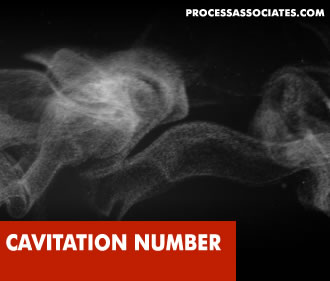Cavitation Number


Cavitation Number Calculator
The cavitation number (Ca) is a dimensionless parameter used in fluid mechanics to characterize the likelihood or intensity of cavitation occurring in a fluid flow system. Cavitation is the formation of vapor bubbles or cavities in a liquid, usually due to rapid changes in pressure, which can have detrimental effects on equipment and performance.
Cavitation number is proportional to { (excess of local static head over vapor pressure head) / (velocity head) } and is used in momentum transfer in general and throttling calculations in particular. It is normally defined in the following form above
Where: | ||
gc | = | Dimensional constant |
p | = | Local static pressure |
p_v | = | Vapor pressure |
rho | = | Density |
V | = | Velocity |
The cavitation number helps determine whether cavitation is likely to occur in a fluid flow system. A low cavitation number indicates a higher likelihood of cavitation, while a high cavitation number suggests that cavitation is less likely to occur.
Depending on the specific application and conditions, engineers may use different criteria to assess cavitation risk based on the cavitation number. In general, a cavitation number close to zero or negative indicates a higher risk of cavitation, while a cavitation number well above zero suggests a lower risk.
The cavitation number is commonly used in the design and analysis of hydraulic systems, pumps, propellers, and other fluid machinery to prevent cavitation-related issues and optimize performance.
